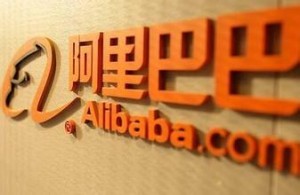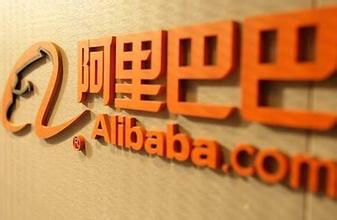Online market in China: How Alibaba started
With Alibaba’s IPO set to break records, there’s been a surge of interest in the company from the West. Savvier followers of online commerce have already had their eyes on Jack Ma’s start-up and its spin-off sites since it handily beat eBay’s attempt to capture market share in China, but others appear to be taking serious note of it for the first time. The name is meant to invoke “open sesame,” but in this case, it’s the online marketplace, rather than a cave of hidden gold. As one of China’s most lauded enterprises, it’s a central fixture of the Chinese market.
The launch and development of Alibaba
 Alibaba is the website that Jack Ma founded in 1999, and has become the name of its flagship website. It has since morphed into something much larger than a simple listings site, but it still has the same goal; to serve as a B2B, B2C, and C2C marketplace. Originally it was intended to connect Chinese manufacturers and suppliers with overseas companies but has changed into a more general online trading place for SMEs. It is further subdivided into three main sites; Alibaba.com, the main English language site; 1688.com, which is the Chinese language B2B site; and AliExpress.com, which is a wholesale channel for small businesses and small quantities of goods. It serves both domestic and foreign firms. Taobao was mainly launched to counter eBay. It acts as the C2C marketplace where individual vendors can supply customers directly. To cope with the additional volume and the changing nature of e-commerce in China, it was subsequently split into further sites; Taobao Marketplace remains the hugely popular C2C site as before, the new location Tmall serves as a place for bigger brands to engage in B2C transactions, and eTao serves as an e-commerce search engine. Although there have been some scandals involving fraudulent vendors, piracy and black market dealings on the e-commerce sites, they are still the most popular e-commerce sites in China. It has captured a market share of roughly 85% in China, and in the final nine months of 2013, it made 35.17 billion RMB from the revenue on commerce. Most of this revenue comes from selling various marketing services to the vendors, such as pay-for-performance ads, allocating preferential search rankings on certain keywords to the vendors who pay prices set by online auction systems. In addition to this, it generates significant income from ad revenue from either vendors or outside companies. Taobao currently hosts more than 80 million listings.
Alibaba is the website that Jack Ma founded in 1999, and has become the name of its flagship website. It has since morphed into something much larger than a simple listings site, but it still has the same goal; to serve as a B2B, B2C, and C2C marketplace. Originally it was intended to connect Chinese manufacturers and suppliers with overseas companies but has changed into a more general online trading place for SMEs. It is further subdivided into three main sites; Alibaba.com, the main English language site; 1688.com, which is the Chinese language B2B site; and AliExpress.com, which is a wholesale channel for small businesses and small quantities of goods. It serves both domestic and foreign firms. Taobao was mainly launched to counter eBay. It acts as the C2C marketplace where individual vendors can supply customers directly. To cope with the additional volume and the changing nature of e-commerce in China, it was subsequently split into further sites; Taobao Marketplace remains the hugely popular C2C site as before, the new location Tmall serves as a place for bigger brands to engage in B2C transactions, and eTao serves as an e-commerce search engine. Although there have been some scandals involving fraudulent vendors, piracy and black market dealings on the e-commerce sites, they are still the most popular e-commerce sites in China. It has captured a market share of roughly 85% in China, and in the final nine months of 2013, it made 35.17 billion RMB from the revenue on commerce. Most of this revenue comes from selling various marketing services to the vendors, such as pay-for-performance ads, allocating preferential search rankings on certain keywords to the vendors who pay prices set by online auction systems. In addition to this, it generates significant income from ad revenue from either vendors or outside companies. Taobao currently hosts more than 80 million listings.
How is Alibaba different from other sites like eBay?
 From the perspective of the vendors, perhaps the most significant difference is that it is free. Listings cost no money and providers may extend the listings for free for a period of time. Furthermore, the wide variety of categories allows vendors to advertise effectively onsite and ensures buyers have an easy path to the vendor pages. From the customer side, the ease of transaction provided by Alibaba’s payment system, Alipay, makes the purchasing experience easy and uncomplicated. The escrow payment system also ensures that the payment is not released until the customer has received their goods, discouraging fraudulent activity. Both vendors and buyers can benefit from the instant messaging system built on the site as well; it allows suppliers and buyers to negotiate directly in real-time, ensuring ease of communication and a much more responsive and flexible user experience than eBay.
From the perspective of the vendors, perhaps the most significant difference is that it is free. Listings cost no money and providers may extend the listings for free for a period of time. Furthermore, the wide variety of categories allows vendors to advertise effectively onsite and ensures buyers have an easy path to the vendor pages. From the customer side, the ease of transaction provided by Alibaba’s payment system, Alipay, makes the purchasing experience easy and uncomplicated. The escrow payment system also ensures that the payment is not released until the customer has received their goods, discouraging fraudulent activity. Both vendors and buyers can benefit from the instant messaging system built on the site as well; it allows suppliers and buyers to negotiate directly in real-time, ensuring ease of communication and a much more responsive and flexible user experience than eBay.
What’s the key to Alibaba’s success?

Alibaba’s understanding of the local Chinese market has been its valuable asset. Its realisation that the vast majority of Chinese consumers do not own credit cards led to it setting up its own proprietary payment system (Alipay), which has since been expanded to allow for a wide variety of payment types, credit and debit cards from a variety of domestic and international banks, or a simple smartphone application. This use of a smartphone in place of a credit card is an excellent example of how Alibaba tailored its model to the smartphone-savvy Chinese market. It’s free listings and lack of the main transaction fees (there are none on Alipay), also makes it extremely attractive to price-conscious users. Though this “free” model was initially scoffed at, the revenue Alibaba has been making from ad revenue has been bolstered by the influx of users to this open platform. Most importantly, Alibaba’s market research has been an exception. It realized that most of its active buyers are outside of China’s major cities. 61% of customers and 51% of sellers do not live in tier 1 or level 2 region, and its marketing and advertising have reflected this. It has a heavy presence on TV and physical ad space, which reach a portion of the Chinese population that other, more internet-focused companies may not consider. While some argue that strict regulations against foreign businesses in China have given Alibaba an unfair advantage over major worldwide competitors, it has made every effort to make the online marketplace as user friendly a place as possible, and its outmanoeuvring of eBay in the early 2000s suggests that it has more to do with decisive market insight.
More about online market in China
Sources:
https://blogs.wsj.com/digits/2014/05/06/quick-hit-on-alibabas-taobaotmall/ Matthieu David
https://thenextweb.com/asia/2013/10/17/alibaba-is-building-its-alipay-payments-service-into-the-paypal-of-the-east/ https://www.forbes.com/sites/china/2010/09/12/how-ebay-failed-in-china/ https://www.thomascrampton.com/china/taobao-china-ecommerce/ https://www.economist.com/blogs/schumpeter/2014/07/alibabas-ipo https://www.businessweek.com/articles/2014-05-06/alibaba-files-for-an-ipo-why-you-should-care





